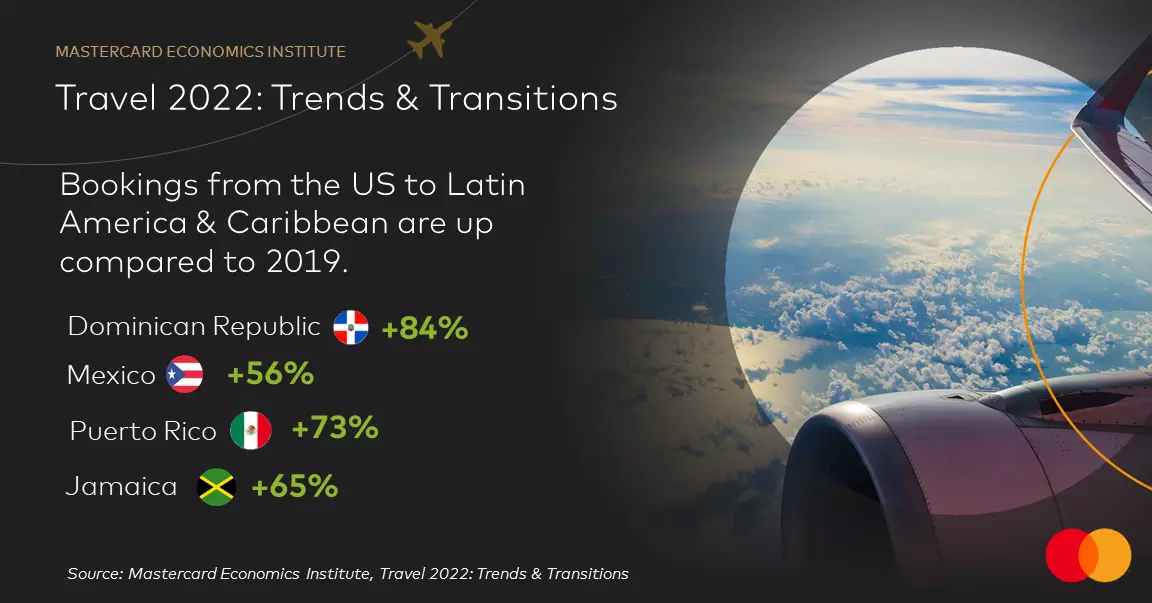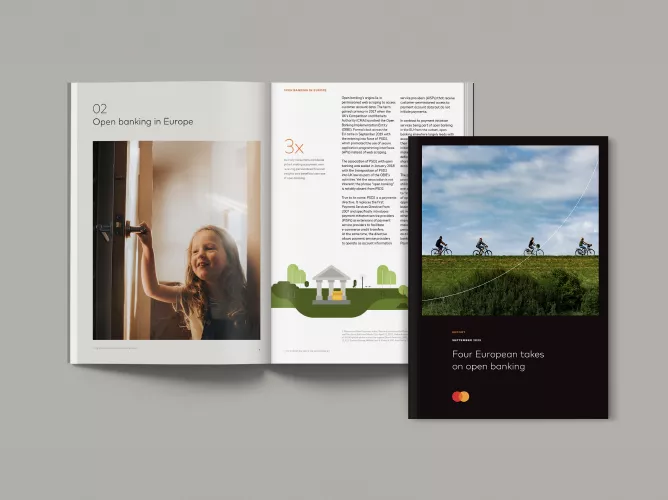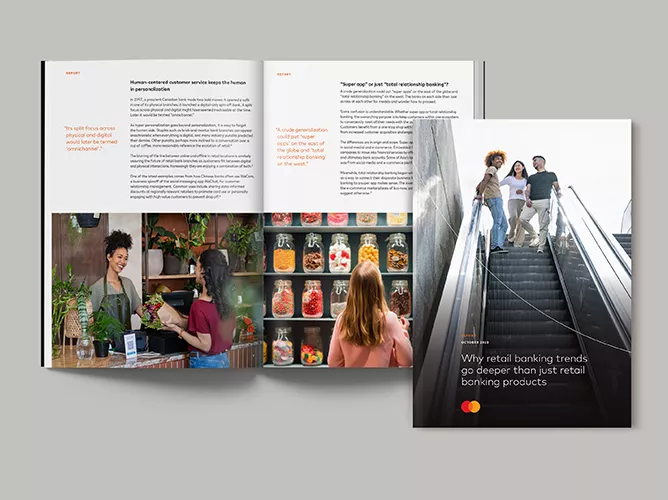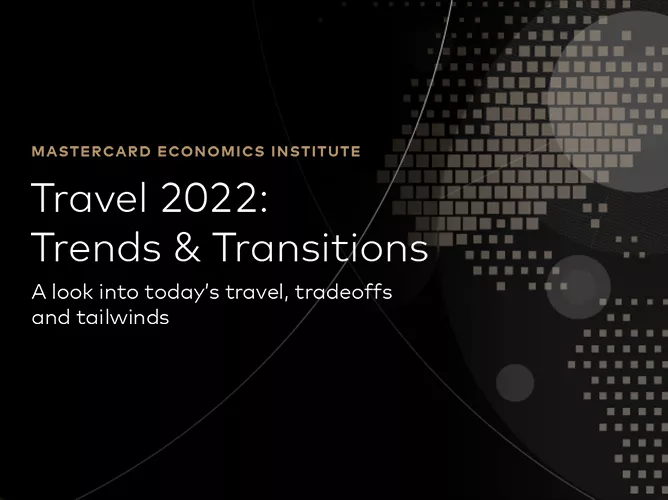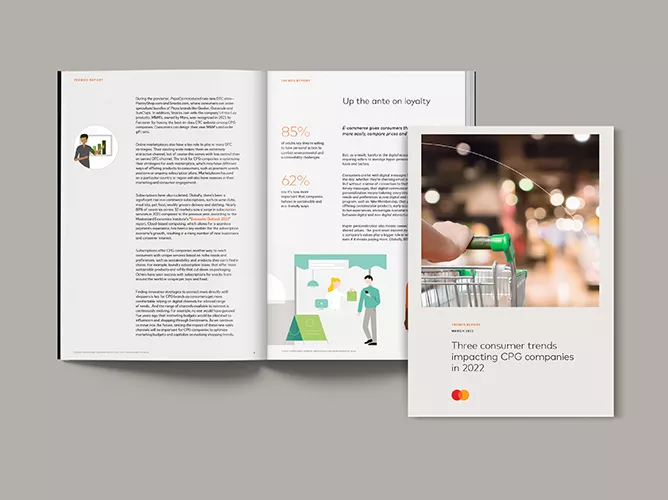Latin America & the Caribbean is numero uno in travel recovery
By Bricklin Dwyer, Mastercard Chief Economist and Executive Vice President, Mastercard Economics Institute
Countries in Latin America and the Caribbean (LAC) have always benefited from a robust tourism industry, often driven by people escaping cold winter weather. And now, in comparison to other regions of the world, LAC is the leading many of the travel recovery trends.
On a global scale, pent-up demand and excessive savings have driven cross-border travel to reach pre-pandemic levels as of March for the first time since the start of the pandemic, according to an
analysis by the Mastercard Economics Institute.
1
This is one of several emerging trends uncovered in the Mastercard Economics Institute's third-annual travel report,
Travel 2022: Trends & Transitions. The analysis explores the global headwind and tailwind trends pushing and pulling on travel recovery. Drawing on aggregated and anonymized sales activity from the Mastercard network
2, coupled with proprietary analysis of other data sources, the report looks at today's travel-related decisions, including top destinations, modes of transportation, accommodations, and spending on the ground.
Looking closely at LAC’s travel recovery, the region is leading in the types of flights people in LAC are booking, including their purpose (leisure) and distance (short- and medium-haul). There are also trends where LAC is quite different from the rest of the world. Here’s what is happening in LAC:
Today’s traveler
Like the rest of the world, travelers from LAC were largely driven to start booking flights again after the easing of mobility restrictions, which started in 2021 and continued into 2022. Most recently, Argentina lifted all travel restrictions in March 2022, including for unvaccinated people. Chile opened its borders in April for the first time in two years. And Rio de Janeiro held its infamous Carnival parades at the end of April after postponing the event two months earlier because of the omicron variant.
But the LAC travel recovery really started taking shape in 2021, led by domestic flights at smaller distances. Since the onset of the pandemic, short-haul domestic travel (under 2,000 km) has been the itinerary of choice for the region. By the spring of 2021, the short-haul leisure travel bookings in the region were back to pre-pandemic levels.
The recovery in medium-haul travel (2000-4,300 km) was a bit more protracted, but once it picked up momentum, it regained ground surprisingly fast – bookings are now up almost 70% compared to 2019 levels.
The recovery in business travel, on the other hand, has been a bit more subdued. Short- and medium-haul business flight bookings exceeded 2019 levels only in January 2022, with long-haul bookings (over 4,300 km) still almost 30% below the levels seen in 2019.
Destinations
Globally in 2022, there was a change in where people were traveling, with an unprecedented surge in international flight bookings. Long-haul leisure flight bookings started the year at roughly -75% below pre-pandemic levels, impaired by the spread of the omicron variant and fewer open borders.3 But in just a few months, long-haul leisure flight bookings started to approach where they were in 2019. In addition, domestic travel continues to exceed pre-pandemic levels.5
Globally, the top three destinations for travelers in the first half of 2022 were the United States, the United Kingdom and Switzerland. Canada and the U.K., where protective measures were among the strictest, lost ground for most of 2021. The U.K. notably sprung back up to the top of the leaderboard in 2022.
Destinations that were lower on the list in 2019 - such as Mexico and Spain - are now higher in 2022.6
For travelers from LAC, the United States has been the destination of choice - far above Canada in second place and the United Kingdom in third place.
Meanwhile, countries like the Dominican Republic, Mexico, Puerto Rico and Jamaica were among the top 10 destinations for American travelers, where less stringent mobility restrictions and a concerted push to attract “remote workers” and “digital nomads” spurred an influx of tourists.
Countries like the Dominican Republic, Mexico, Puerto Rico and Jamaica were among the top 10 destinations for American travelers.
Modes of travel
Throughout the pandemic, people around the globe mostly relied on cars for traveling over buses, trains and cruises. While those other modes are now picking up around the globe, traveling by car remains high for visitors to LAC.
With the easing of travel restrictions in the Spring of 2021, cross-border spending on auto rentals began to accelerate and reached pre-pandemic levels by May 2021. At the end of April 2022, auto rental spending was up +34.2% compared to the same time in 2019. Public transportation was also on the upswing at +67.4% above pre-pandemic levels. Buses have also seen a pick-up, increasing +6.4% above 2021 levels. But rail travel in LAC has not been able to recover so quickly, remaining at -45.6% below pre-pandemic levels.
Spending while traveling
The global trend toward the experience economy has also reached Latin America as international tourism spending on experiences such as amusement parks, museums, concerts and other recreational activities, has measurably outperformed tourism spending on goods.
In Brazil, for example, spending on experiences is up almost 40% compared to 2019, while spending at various retail stores and outlets is down more than -11%. However, spending on experiences and stuff are both up in Mexico, 122.9% and 127.6% respectively.
This tracks with the global trend where international tourism spending at bars and nightclubs was 72% above pre-pandemic levels through April 2022. International tourists are also spending 35% more on amusement parks, museums, concerts and other recreational activities. By comparison, tourist spending on apparel, department stores, cosmetics and other retail categories is down compared to 2019.
There are numerous risks that could continue to push and pull on travel recovery, such as inflation impacting discretionary spending, another virulent mutation of the coronavirus, and heightened geopolitical risk. The travel recovery is far from complete.
To read more on the latest travel trends, check out the full report: Travel 2022: Trends & Transitions.
1 Source: Mastercard Incorporated First Quarter financial results conference call presentation (4/28/2022).
2 In this report, the Mastercard Economics Institute explores a unique database of aggregated & anonymized Mastercard switched volumes (nominal US dollars unadjusted for FX) in addition to aggregated & anonymized flight booking data provided by third party partners.
3 Corresponds with the number of flight bookings made by leisure travelers during reference period relative to the same time in 2019. Based on aggregated & anonymized flight booking data provided by third party partners, sourced by Mastercard Economics Institute. Long-haul flights correspond with international flights 4,300km+ in one-way distance.
4 Corresponds with the number of flight bookings made by leisure travelers during reference period relative to the same time in 2019. Based on aggregated & anonymized flight booking data provided by third party partners, sourced by Mastercard Economics Institute. Long-haul flights correspond with international flights 4,300km+ in one-way distance.
5 Corresponds with the number of flight bookings made during reference period relative to the same time in 2019. Based on aggregated & anonymized flight booking data provided by third party partners sourced by Mastercard Economics Institute. Short and medium-haul flights correspond with international flights ranging from roughly 0-2,000km and 2000-4,300 km in one-way distance.
6 Analysis based on the number of inbound flight bookings made by selected region into destination markets. Based on aggregated & anonymized flight booking data provided by third party partners sourced by Mastercard Economics Institute.
